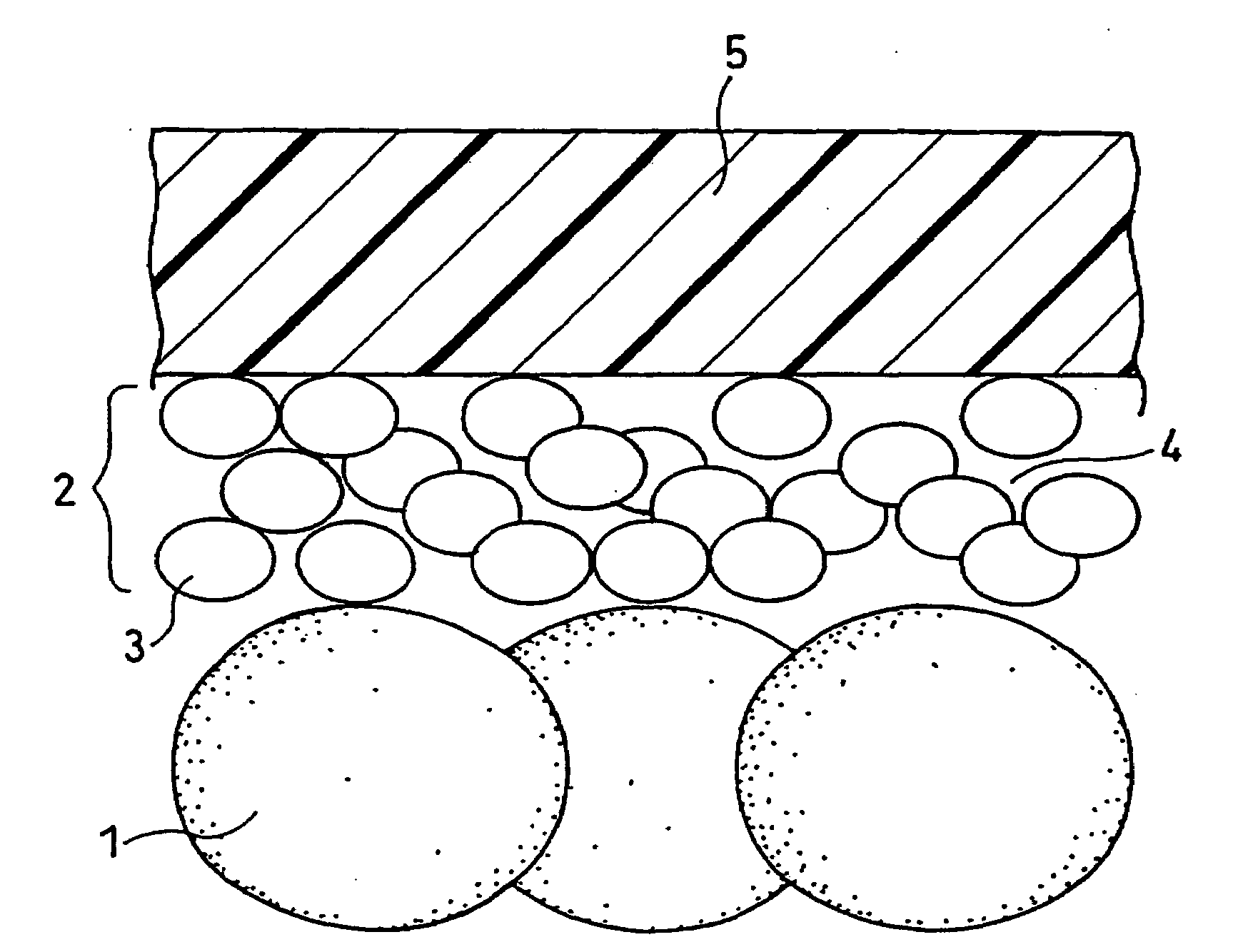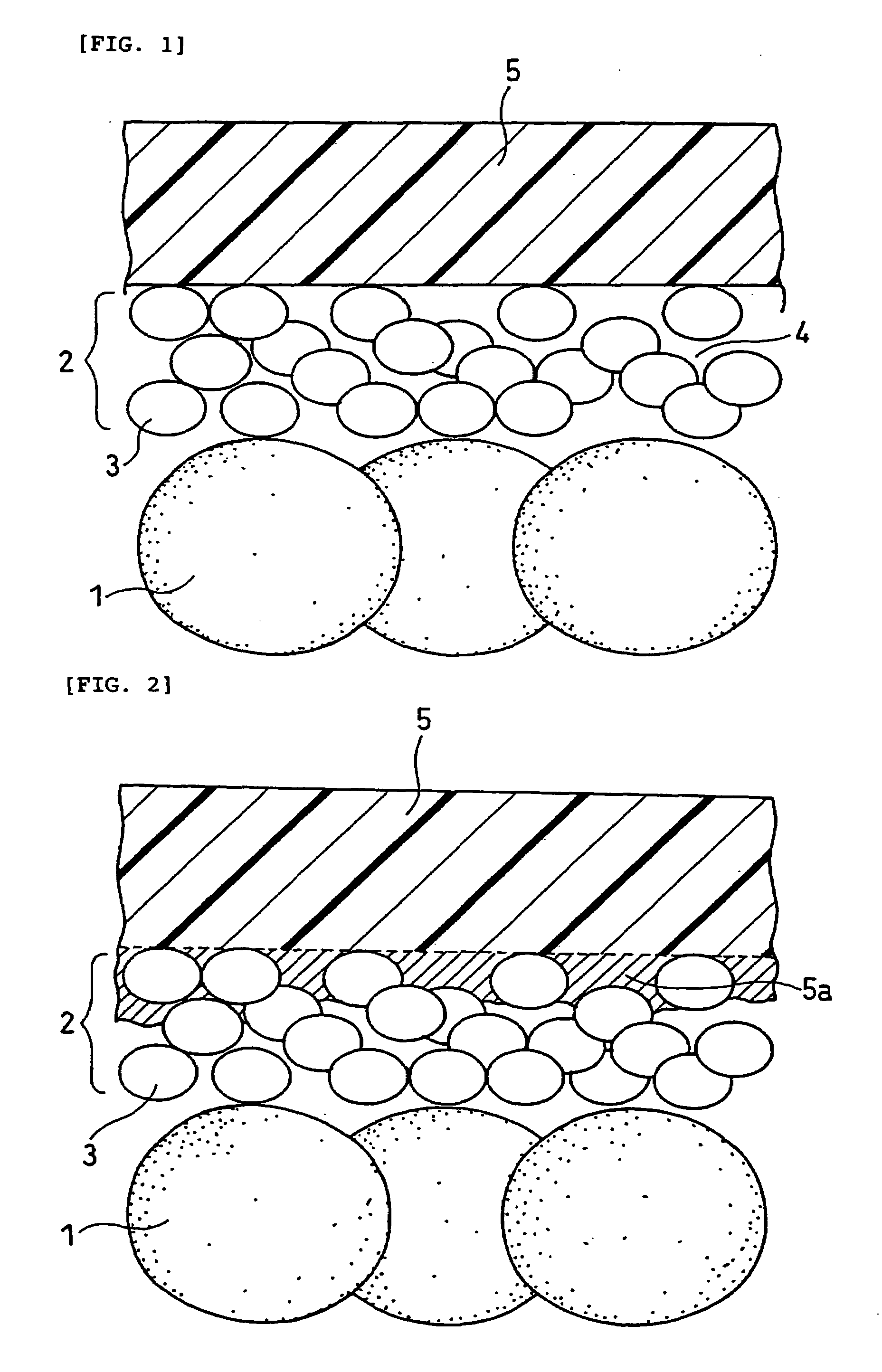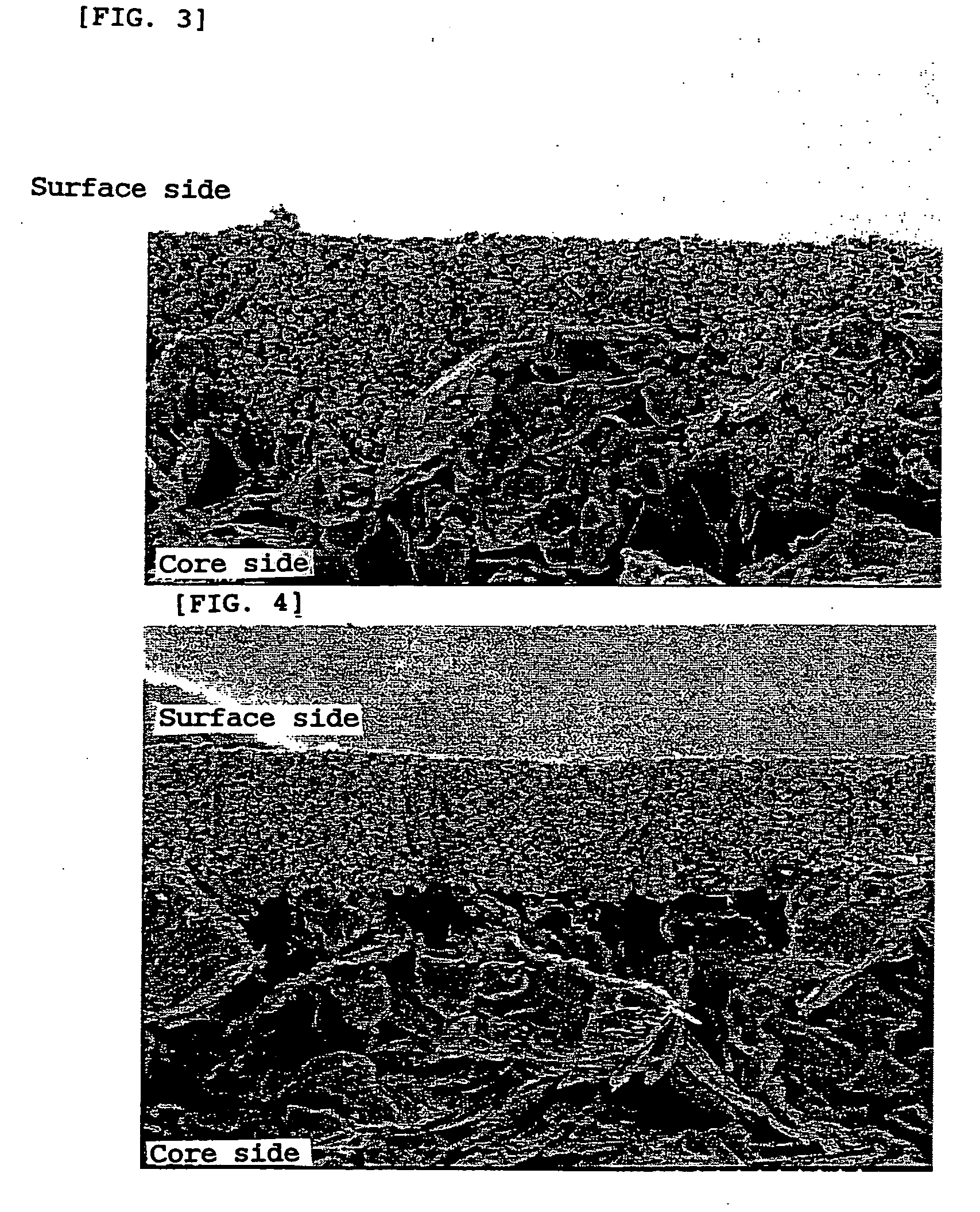Non-aqueous electrolyte secondary battery
a secondary battery, non-aqueous electrolyte technology, applied in the manufacture of final products, cell components, electrochemical generators, etc., can solve the problem of increasing the temperature of the battery
- Summary
- Abstract
- Description
- Claims
- Application Information
AI Technical Summary
Benefits of technology
Problems solved by technology
Method used
Image
Examples
example 1
(i) Production of Positive Electrode
[0081]A positive electrode material mixture paste was prepared by mixing with stirring 3 kg of lithium cobalt oxide (positive electrode active material), 1 kg of #1320™ available from Kureha Chemical Industry Co., Ltd. (an NMP solution containing 12% by weight PVDF (positive electrode binder)), 90 g of acetylene black (conductive material) and an appropriate amount of NMP with the use of a double arm kneader. This paste was applied onto both surfaces of a 15 μm thick aluminum foil (positive electrode current collector) except for the positive electrode lead connecting part. The dried coating layers were rolled by rollers to form positive electrode material mixture layers. Thereby, a positive electrode hoop was obtained. The electrode plate composed of the aluminum foil and the positive electrode material mixture layers had a thickness of 160 μm. Thereafter, the positive electrode hoop was cut into a size of 60 mm in width and 500 mm in length. A l...
example 2
(i) Production of Positive Electrode
[0093]A positive electrode material mixture paste was prepared by mixing with stirring 3 kg of lithium cobalt oxide (positive electrode active material), 1 kg of #1320™ available from Kureha Chemical Industry Co., Ltd. (an NMP solution containing 12% by weight PVDF (positive electrode binder)), 90 g of acetylene black (conductive material) and an appropriate amount of NMP with the use of a double arm kneader. This paste was applied onto both surfaces of a 15 μm thick aluminum foil (positive electrode current collector) except for the positive electrode lead connecting part. The dried coating layers were rolled by rollers to form positive electrode material mixture layers. During the formation of the positive electrode material mixture layers, the thickness of the electrode plate composed of the aluminum foil and the positive electrode material mixture layers was controlled to be 160 μm. Then, the electrode plate was cut so as to have a width which...
example 3
[0105]Batteries were produced in the same manner as in Example 2 except that, in the preparation of the porous film paint, the time for the first mixing was changed to 10, 20, 45 and 60 minutes. The porous insulating films had a porosity P of 0.60, 0.60, 0.58 and 0.55, respectively. Accordingly, the R−P values were 0, 0, 0.02 and 0.05.
PUM
| Property | Measurement | Unit |
|---|---|---|
| temperature | aaaaa | aaaaa |
| void size distribution | aaaaa | aaaaa |
| surface roughness Ra | aaaaa | aaaaa |
Abstract
Description
Claims
Application Information
 Login to View More
Login to View More - R&D
- Intellectual Property
- Life Sciences
- Materials
- Tech Scout
- Unparalleled Data Quality
- Higher Quality Content
- 60% Fewer Hallucinations
Browse by: Latest US Patents, China's latest patents, Technical Efficacy Thesaurus, Application Domain, Technology Topic, Popular Technical Reports.
© 2025 PatSnap. All rights reserved.Legal|Privacy policy|Modern Slavery Act Transparency Statement|Sitemap|About US| Contact US: help@patsnap.com



